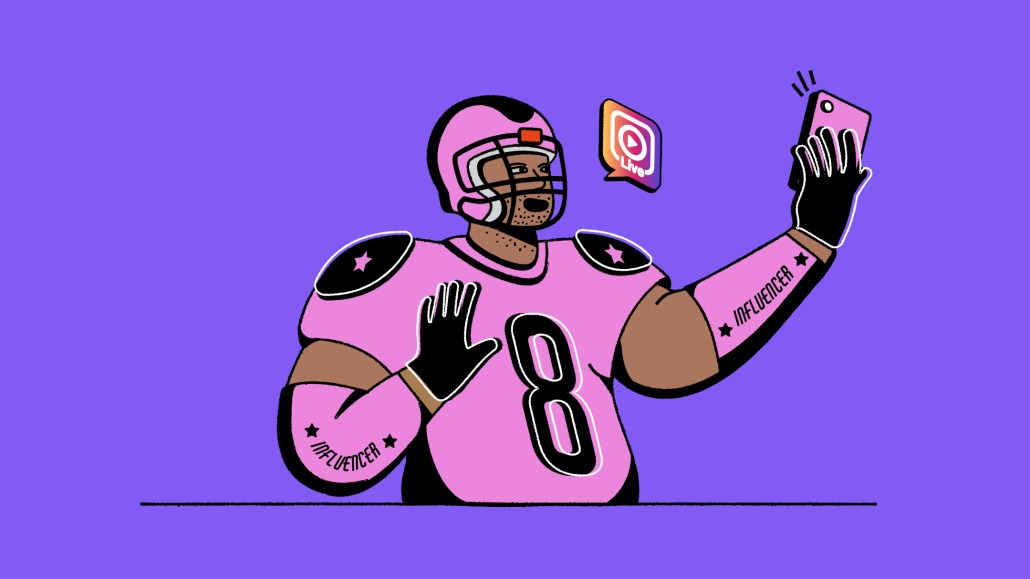How EssentiallySports’ creator program benefits both sides of the equation

This article is part of Digiday’s coverage of its Digiday Publishing Summit. More from the series →
As creators rise, publishers are finding that they can partner with creators to produce original content and generate value for both sides of the equation.
Over the past year, the sports news publication EssentiallySports has employed creators to make in-house video and editorial content around major tentpole sporting events — and thus far, the experiment has paid off, according to numbers shared by EssentiallySports co-founder and head of audience growth Suryansh Tibarewal during a talk at this week’s Digiday Publishing Summit in Miami.
In July, for example, EssentiallySports hired a top women’s basketball player, Natasha Howard, to create editorial content around the WNBA All-Star Game, including a letter to Howard’s younger self that Tibarewal said went viral among older readers. During the game, EssentiallySports’ newsletter open rate spiked from roughly 38 percent to 49 percent, with click-through rates increasing by over 50 percent and CPMs rising accordingly, per Tibarewal. Search traffic to Natasha-Howard-related articles on EssentiallySports spiked by 72 percent before and after the event, with EssentiallySports recording a 25 percent increase in average clicks per user across its women’s-sports-focused “She Got Game” newsletters during the campaign week.
“Our time on page goes up overall when people poll and comment more, so of course, [ad revenue] goes up,” Tibarewal said.
In addition to prominent athletes like Howard, EssentiallySports’ creator program also involves digital-native creators such as Chloe Mitchell and tennis creator Nathan “NotYourCountryClub” Walroth. Due to the range of creators participating in the program, Tibarewal declined to share a specific deal structure, saying EssentiallySports’ content fees paid to athletes start at $1,000 per post and go up “as high as it gets.” Regardless of the structure, he said that participating creators had mutually benefited from tapping into EssentiallySports’ following, with Howard’s Instagram follower count growing by roughly 7,000 during the event.
“For creators, even though we own the IP, they can co-share it on Instagram, et cetera,” Tibarewal said. “For example, for Natasha, there was 12% growth on her Instagram channel when she did that. We’ve known Chloe for two or three years — before she became the million-follower Instagram and TikTok influencer she is now — and this happened through mutual growth that we did together.”
Amid a publisher conference dominated by discussions of encroaching AI tech and a potential Google Zero future, Tibarewal stressed that his company had invested in its creator program as a direct response to the impact of AI and changing search algorithms on traffic, with EssentiallySports finding it more imperative than ever to build out its owned environments by building bridges with popular creators and their audiences.
Tibarewal also highlighted the high level of trust and confidence that creators inspire among their audiences as another strength of the creator program, giving EssentiallySports another tool to fight growing reader distrust of AI-generated media. By serving creator content alongside its written editorial posts, EssentiallySports looking to help its articles benefit from the reflected light.
“We circulate a lot of short-form content that these creators create with us in our articles,” Tibarewal said. “And if you pair that up with editorial, that just makes it very real for a user reading that piece.”
More in Media

A timeline of the major deals between publishers and AI tech companies in 2025
Here’s a list of all the major deals signed between publishers and AI tech companies in 2025.

No playbook, just pressure: Publishers eye the rise of agentic browsers
For the bulk of publishers, Google is, as ever, the one to watch. It’s already got agentic features within its Chrome browser, but that’s the tip of the iceberg, some say.

The biggest SEO lessons in 2025 for publishers
KPIs are changing, more AI search data is becoming available, and publishers are looking beyond search to grow their audiences and revenue.








